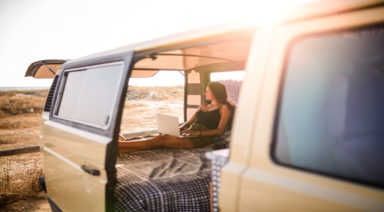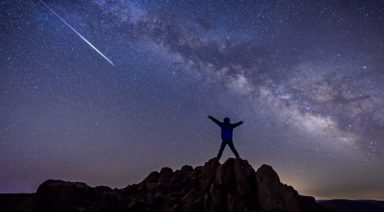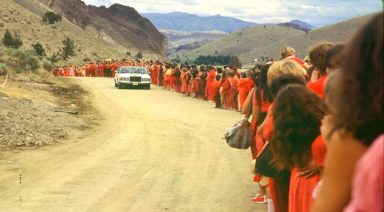Survivalism 101

The practice of “prepping” is growing: the resurgence of the DIY movement among millennials and apocalyptic preparation among the super-rich are indicators of this trend. The tech elite is buying islands and stocking them with food, renewable energy systems, and ammunitions; hedge fund managers are purchasing land in remote areas and building independent infrastructure. According to the New Yorker, survivalism has “expanded to more affluent quarters, taking root in Silicon Valley and New York City.”
What are People Preparing For?
An environmental cataclysm, prophetic apocalypses, failure of the energy grid, collapse of agricultural systems, viral outbreaks, the collapse of the financial market and overall economy, fascist regime takeovers, the list continues to grow. Survivalism has a long history: in 1961, President Kennedy called for Americans to build bombs or fallout shelters due to Cold War fears. Long before that, survivalism was the normal way of life.
Drivers of Survivalism
While largely driven by fear and independence, this movement is also driven by an interest in sustainable and off-grid living. Though a traditional survivalist future mirrors a scene in Mad Max or Cormac McCarthy’s The Road, the so-called “Thrivalist” movement grounds survivalism in collaboration, sustainability, and community.
Assignment: Catalog Your Dependencies
From the moment you wake up, you are dependent on systems and materials, from the electrical grid to the food supply chain. If you wear glasses, have a significant food allergies, drive to work on a road, or purchase groceries in a store, then you are reliant. When you are reliant, you are not independent, and thus, less likely to survive on your own.
Each day, take note in a journal of all the systems and materials that you rely on. Consider the things you need to live versus the things that you choose to use.

Survivalism 101
Grow your innate survival abilities and watch your sleep improve and your worries lessen. Often your greatest fears become your greatest strengths; consider teaching others as you hone your skills. Here are a few ways to establish your independence.
Grow Your Own Food
Learn how to grow your own food. Also, learn how to store, pickle and dry food. Learn how to cook with minimal ingredients. Consider growing medicinal plants and learning the edible and medicinal plants that naturally grow in your local environment. When you grow your own food pre-apocalypse, you may even save $24,000 per year. Composting skills are also extremely valuable, especially if biomass energy is generated.
Know the Rhythms of the Earth
Read about the cycles of the sun and moon. Document eclipses, astronomical changes and learn to navigate by the stars. Master navigators were often the explorers and elders of ancient civilization, revered for their understanding of earth systems. Now a lost art, some cultures still use “Old World” navigation: Polynesian’s are still considered genius navigators and use ancient techniques to travel the ocean by canoe.
Learn to Hunt, Fish and Raise Livestock
Learning to hunt, fish and raise livestock are invaluable skills. Hunting and fishing may involve various weapons or trapping techniques. The Boulder Outdoor Survival School teaches three basic hunting strategies; the strategies are based on the tactics used by animals, such as canine (chase/pack hunting), feline (spot and stalk) and raptor (ambush). Urban agriculture programs are surfacing all around the world, which supports efforts to raise chickens, rabbits or even apiary endeavors. Explore the urban agriculture policies of your local government.
Green Your Energy Supply
While your first step is to measure and lower your energy use, you may also invest in renewable and alternative energy sources. Invest in solar panels, a generator, wind turbines and property with geothermal energy. Tesla’s solar shingles are inspiring new home designs: consider following the work of energy progressive’s like Tesla and the Rocky Mountain Institute.
Find Independent Health
Learn how to heal yourself. How to take care of yourself. If you are dependent on medicine, find a natural remedy you can grow. If you need glasses, consider getting laser eye surgery. Steve Huffman, CEO and Founder of Reddit and survivalist, got laser eye surgery so he would no longer be dependent on his contact lenses or glasses. If you have allergies, explore immune-building tactics you can take to increase your tolerance.
Get Skilled
Take technology, engineering or construction classes. Learn how things work, how to take them apart and put them together. In large part, survival skills involve understanding nature and learning how to use natural materials and processes to survive. Take survivalist courses: learn how to build a snow cave and start a fire without matches. Here are some other training courses to consider:
- Basic medical training, including CPR
- Herbology and gardening
- Electrical training, such as how to repair a radio
- Machinery maintenance
- Chemistry (think Matt Damon in The Martian)
- Cartography and map reading
- Survival training in different environments, such as urban or rural
- Archery
- DIY anything
Draft a Communication Plan
Establish a meeting place or signal system with loved ones. FEMA provides guidelines for emergency preparation, including organization of identification and financial documents. However, in the event that government emergency services are not operating, consider drafting a basic plan on where and when to congregate with family members, on high ground and at a certain time driven by nature, such as sunrise.
Honor Native Wisdom
Throughout history, many indigenous cultures have lived in harmony with the planet, with respect for nature, animals and the cycles of the planets. Learn about indigenous cultures in your area: how they handled weather extremes, the plants they ate and used, and how they built shelter. These practices were refined over centuries and offer ingenious survival tricks.
Find Allies
The “lone wolf” survival strategy is only one approach to survivalism. According to Gregg Braden, cooperation, not competition, is the most successful evolutionary driver and thus, adaptation strategy. Create a network, understand each other’s strengths and weakness, work together to create and implement solutions.
Play Defense
Learn how to defend yourself. For some this may mean stockpiling ammunition, but considering that is not a sustainable tactic, try learning martial arts, archery or basic defense strategy. Placement of a shelter, on high ground and with a bird’s eye view, is an example of a tactical defense strategy.
Dream of Contributionism
The principles of Ubuntu may seem idealistic, but a survivalist future based on contributionism is certainly possible. To prepare, develop a craft people will need and appreciate. For example, learn to grow strawberries for a world wanting sweetness or knit wool hats for cold winters. Consider your personal strengths and leverage them.
Practice
It may seem counterintuitive, but survivalism requires practice. Embody a mindset of sustainability and independence. Set aside time each year to test and advance your survival skills. Try a survival field course: you can find courses and schools that offer urban or wilderness survival training. Eventually you may even consider living off the grid full time.
Can Meme Stocks Shift the Economy in Favor of the Little Guy?

The financial system has been turned on its head in the past few months with the rise of what has been named “meme stocks.” But is this grassroots movement of regular everyday investors a passing trend? Or could they really transform the way our economy works going forward?
“Meme stocks,” called such because they are ordinary stocks fueled by people through social media, can spike in value based on the zeitgeist and not the fundamentals of the companies they represent, and as a result can often be highly volatile. Made famous by the popular subreddit r/wallstreetbets, this is truly a grassroots movement.
But even with the volatility that comes with these stocks, investors are not shying away from them. Many investors are doubling down, despite warnings from financial institutions, or perhaps in spite of them. But what is driving the popularity of meme stocks, and why do they continue to grow contrary to what markets dictate?
Zeus Yiamouyiannis, author of “Transforming Economy: From Corrupted Capitalism to Connected Communities,” explains:
“Well the first thing I think is the larger social phenomenon of the little guy getting screwed, and the big guy rigging the game. And it has never been any more rigged and the concentration of wealth has never been more dramatic, and so what happens is it creates this groundswell of desire to strike back at an unfair system, to strike back at these profiteers, and to win one for the little guys.”




































